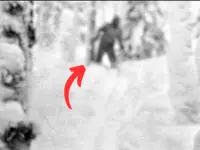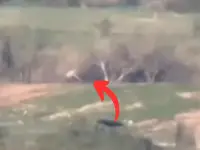5. Nattmara
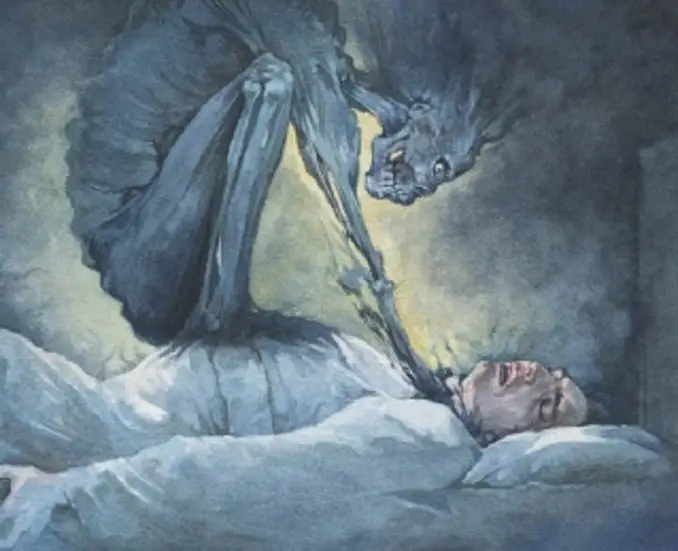
Just like many other cultures in the world, the Scandinavians have their own explanation for nightmares and sleep paralysis and they are called the Nattmara. There are several tales about how these creatures came into existence. One legend tells of a group of peasant women who came together to perform a ritual to alleviate the pain of childbirth. Unfortunately, the ritual had an unfortunate effect. The women found themselves transforming into monstrous werewolves every night, the curse to be carried forth indefinitely by their daughters and their future female generations. Others believe that Nattmara are actually the souls of hyperactive or restless female children. When they should be sleeping, the souls of these children travel by night to disturb the restful sleep of those around them.
The Nattmara are typically described as being wraith thin with pale skin and long black hair and nails. They can transform into sand, making it easy for them to slip through the tiniest crack in a wall or door and straddle the chests of their unwary victims so they can plague them with nightmares. Nattmara are also attributed with properties similar to the banshee. It’s thought that their appearance is an omen of death, and if a Mara leaves a grimy poppet in the living space of a family, someone in the household will soon be affected by tuberculosis. Just for mischief, a Mara will tangle your hair in such knots that they have to be cut out. The Nattmara are also fond of frightening horses, leaving them to be found by their owners, spooked and worn.
There is a way to keep the Nattmara from plaguing your restful sleep. The Mara normally approaches a sleeper from the front of the bed. Placing your shoes there or nailing a horseshoe to the front of the bed will distract her and dissuade her from disturbing a restful night’s sleep.
4. Nökken
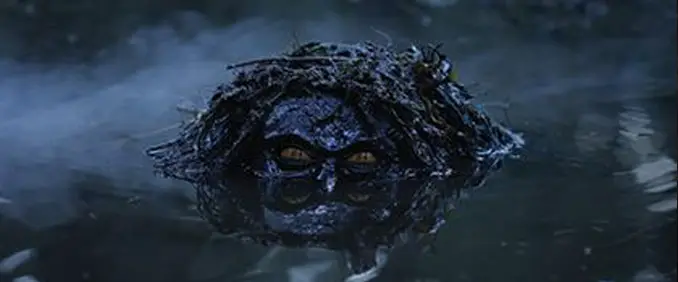
The Nökken, also known as Nykkjen or Nyk, is a frightening creature that is found lurking in areas where there is fresh water, usually deep lakes and ponds. He especially loves areas where there are lily pads, whose lovely flowers attract the unsuspecting. Because he’s a shape-shifter, the Nökken can assume whatever form that he thinks will lure his potential victims. He has been known to assume the guise of a handsome man to trick women into the water where he can then drown them. The same goes for men, with Nökken playing the role of the damsel helpless in the water to entice men in where he can drown them also. Even children aren’t beyond Nökken’s reach. He will assume the form of an attractive white horse, letting a youngster climb onto his back and then quickly leaping into the closest body of water in order to drown the unsuspecting child. The Nökken is also an excellent violinist. His favorite time to play is late in the evening, when his alluring tunes draw the unwary to the lake or pond where he is hidden, the Nökken takes their souls as his forever.
The true appearance of the Nökken is anything but attractive however. He has the waxy skin of a drowned corpse and he is draped in moss and water-logged debris. He has a mouth filled with sharp jagged teeth and large burning yellow eyes that can sometimes be seen resting just above the waterline. Those who have the misfortune of encountering him in his true form are driven to instant insanity, with the Nökken in control of the hapless soul. Fortunately, there are a couple of ways to gain protection from this monster. One method involves casting an iron or steel needle into the body of water where the Nökken resides, speaking its name as you do so. This at the least will stop the Nökken from causing harm, but if performed with true conviction, it can actually kill the Nökken. If the Nökken has already attacked, and you can produce an iron or steel cross, the Nökken will be forced to release you, especially if you are able to keep enough wits about you to call on the Virgin Mary in the process. There is even an old riddle of protection meant to ward off the Nökken: “Nyk! Nyk! Naal i vatn. Jomfru Maria kastet styaal i vatn! Du sæk, æk flyt!” This roughly translates to: “Nyk! Nyk! Needle in the water. The Virgin Mary threw steel in the water! You are sinking, I float!”
3. Fenrir
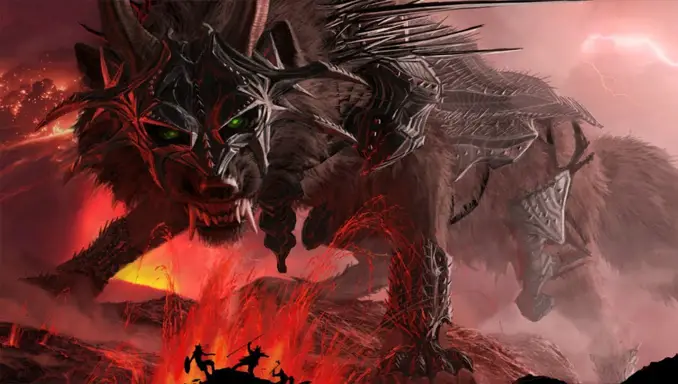
Wolves play a prominent role in Norse folklore and Fenrir is the grandest, most frightening wolf of all. He is the child of Loki, the God of mischief and misrule, and Angrboda, the giantess whose name means “The one who brings grief”. He’s enormous in size, with jaws that reach both the sky and the earth when he howls. His siblings are Hel, the Queen of the Underworld and the Midgard Serpent Jörmungandr.
It was prophesied that Fenrir would play a major role in Ragnarok. It would be the massive wolf that would devour Odin, the All Father. Even as a young adult, Fenrir was a terrifying force. He went on killing rampages, devouring any and all that were in his path. Knowing the danger that Fenrir presented, Odin wanted ultimately to slay him, but in the sacred land of Asgard killing was forbidden. Attempts were made instead to capture and chain Fenrir. Two initial attempts were made using the magical chains Laeding and Dromi, but both attempts failed and Fenrir was still on the loose and wreaking havoc.
The Gods decided to try again, and the gold chain Gleipnir was created using six impossible items – a woman’s beard, a fish’s breath, a bird’s spit, a bear’s nerves, a mountain’s roots and a cat’s footfall. Odin and his cohorts lured Fenrir to the island of Lyngvi and challenged him to attempt to break Gleipnir. Fenrir accepted the challenge, but only if one of the Gods would display their bravery by placing their hand in Fenrir’s mouth. The God Tyr, a warrior God, accepted the challenge and soon Fenrir found himself bound by an unbreakable chain and stashed away in a cave on the island. Eventually Fenrir will free himself with the arrival of Ragnarok, to devour Odin as prophesied. Unfortunately for Fenrir, Odin’s son Vidar won’t appreciate this unkind treatment of his father. He will seek the ultimate revenge by slaying Fenrir.
2. The Huldra
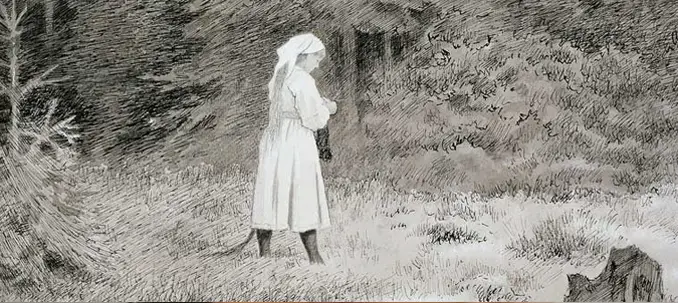 The Huldra are seductive creatures that are found in Scandinavian forests. They are stunningly beautiful women, but they also have a cow’s or fox’s tail and their back is gnarled and hollow like an old tree. They are very protective of the land that they inhabit and can become violent if they or their land are mistreated.
The Huldra are seductive creatures that are found in Scandinavian forests. They are stunningly beautiful women, but they also have a cow’s or fox’s tail and their back is gnarled and hollow like an old tree. They are very protective of the land that they inhabit and can become violent if they or their land are mistreated.
A favorite pastime of the Huldra is luring unsuspecting men back to their den where they are then kept as slaves. Sometimes, instead of enslaving a man, the Huldra will drain him of his life-force, leaving an empty shell behind. Occasionally the Huldra like to toy with humans. After capture, they will release the individual, but they place a terrible curse upon him so that the man is plagued with the constant temptation to return to the one who captured him.
In other stories, the behavior of the Huldra is dependent upon the treatment that they receive from human hands. If they are treated kindly, the Huldra may consent to aid a human with their magic, providing solutions to whatever problems may be occurring in the individual’s life. The Huldra may go so far as to marry a man if she is treated well. When this happens, the Huldra loses her tail and will actually become human herself while still retaining her magical abilities.
The Huldra can be very unpredictable in their nature however. While they might be kind if they are treated well, their mood can turn on a whim, making them quite dangerous. If they are mistreated by their husbands, the Huldra will punish the man, stealing his sight, his hearing, or even his wits. It’s also thought that they occasionally steal human children, replacing them with their own misshapen infants.
1. The Gjenganger

The Gjenganger are terrifying spirits who are trapped on Earth because they may have left things in a poor state when they died. Often, theses spirits are the victims of a senseless crime such as rape or murder, or they themselves could have been the killer. Suicide victims and those who had an abusive family life can also return as a Gjenganger. They are always hateful, and they will go out of their way to harm the loved ones that they left behind – even if they had been fond of them in life.
These ghosts aren’t like your typical spirits. They can actually cause physical harm. The Gjenganger are well known for spreading disease. They pinch their victim’s flesh and the area that was damaged will bruise as infection takes hold. Eventually the tissue will become necrotic and the infection will make its way to the victim’s heart, killing them. Most often, the Gjenganger attack their victims while they are sleeping so they’re defenseless against the attack.
The Gjenganger is quite similar to the vampire in its behavior. They prefer to travel by night and they’re repelled by holy objects such as crosses. They’re highly intelligent and can plan their attacks in a cunning manner.
Fortunately, there are measures that can be taken to ward off the Gjenganger. Unlike other ghosts, the Gjenganger are corporeal in nature, so closing and locking doors and windows can go a long way in deterring these angry spirits. Wearing a cross or other holy object can also protect the wearer from an attack. Folklore states that any shovels used to prepare the grave of an individual who might become a Gjenganger should be left at the grave, and that the coffin should be carried around the church three times before burial. Finally, inscriptions should be carved on the lid of the coffin, beseeching the spirit of the deceased to rest peacefully, leaving family and friends unscathed.
—
Well there you go, that’s our look at 10 creepy creatures from Scandinavian folklore. Have you heard of any of these eerie creatures before? Let us know in the comments section below.





